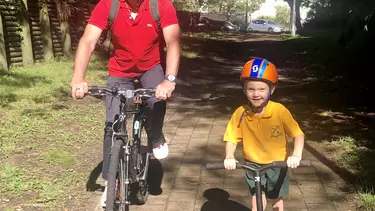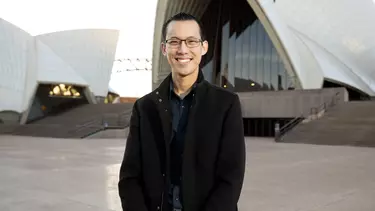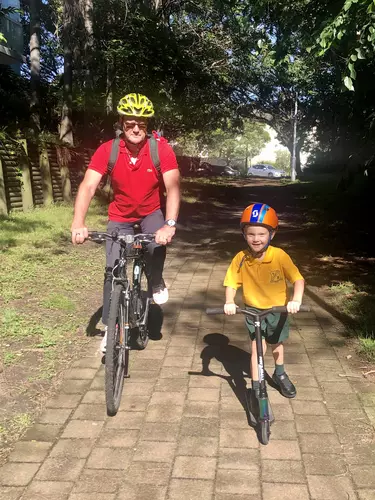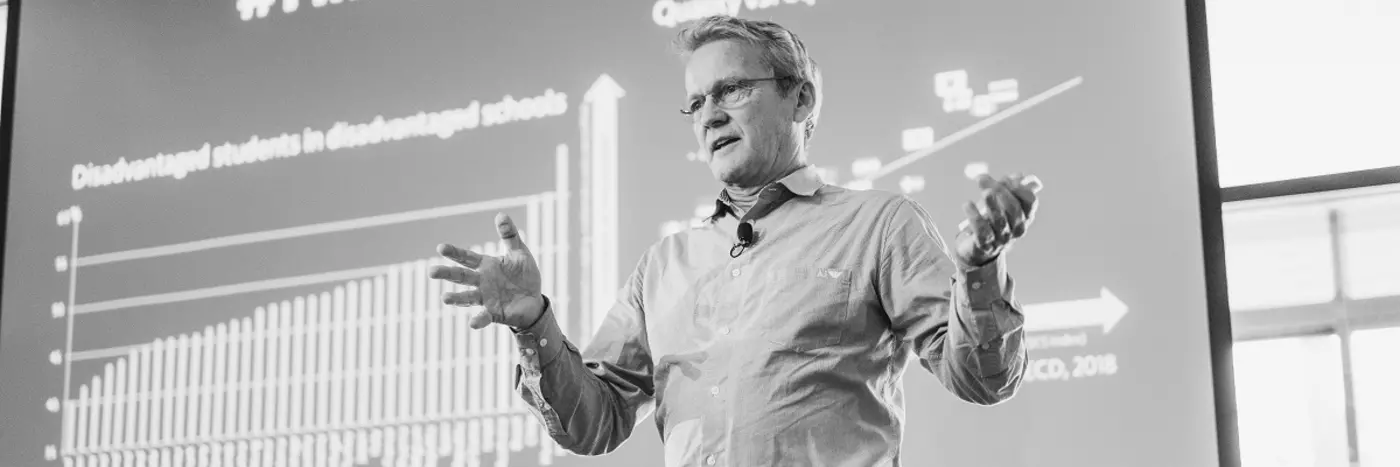The education conversation Australia has to have
Finnish educator and author Pasi Sahlberg writes on the chasm of inequality that exists in the Australian school system
When my friends overseas ask me what I think about Australian education, I tell them that we have the best schools in the world – but not for everyone. Indeed, according to internationally comparative evidence, the learning gap between the lowest and highest performing students in Australia is huge. At the age of 15, this learning gap equates to three years of schooling.
It is an inconvenient fact that one of the wealthiest countries in the world has one of the most unequal education systems among the rich part of the world, but this is what UNICEF and OECD are telling us.
What does educational inequality mean for parents and children here? Firstly, for those parents living in urban areas like Sydney, the big question is where to find a good and affordable school for their children. For many parents, the search starts as soon as the baby is born.
Secondly, for children the competition to get into schools of their parents’ choice often comes with extra pressure and burden already in the early years of primary school. Many children are required to attend extracurricular activities in and out of their school in order to boost their academic knowledge in literacy, numeracy and science as required by NAPLAN and admission tests. This is almost always at the expense of arts, music and play – at school, and at home.

In 2019, UNSW’s Gonski Institute surveyed 2,000 Australian parents’ perceptions of the role of play in their children’s lives. Three of four parents said the important lifelong benefits such as creativity and empathy that children gain from play are mostly ignored by schools and parents today. They also told us that their children play less than they themselves did when they were young.
Furthermore, 80% of parents said that today, children are under pressure to grow up too quickly. Why is this so? One reason may be that school days for the youngest pupils in Australia are longer than in many other countries.
Then, in the early years of primary school, many children are already put under pressure to compete against their peers in order to win a scholarship in prestigious private schools, get admitted to selective public schools, or secure a spot in opportunity classes in their own schools.
...in the early years of primary school, many children are already put under pressure to compete against their peers in order to win a scholarship in prestigious private schools.
The education world my family left behind in Finland a few years ago is very different to the one we are living in here. One important difference, according to our experience, is the absence of toxic competition between schools and among students in Finland. It seems to us that schools are designed more from the point of view of children than adults who run them.
That’s why formal schooling starts only when children turn the age of 7. There are no assessments or tests in primary schools that would lead to competition between children, or labelling any child as a “failing” student. But, there is a lot of time to play; and learning is, as often as possible, designed to build upon the real interests of the students.

Here is the good news. Australia has many benefits that open great opportunities to reimagine school education to meet the needs of the future. We have the oldest tradition of education here that has provided successful learning opportunities to children over tens of thousands of years.
We also have a clear common recognition in the 2019 Alice Springs (Mparntwe) Declaration of the importance of having good education that is accessible to all children. And we have great teachers across this country who are willing to go above and beyond to make sure we will do what we promise to all children.
Parents and community are important players in determining what Australian education could look like. Their opinions and perspectives shape the way politics behind education are handled. That’s why open and candid conversations between community members are so important.
Australia has many benefits that open great opportunities to reimagine school education to meet the needs of the future.

There is no one right answer to what we need to do to create a great school for all children. We should also accept that we have everything we need to improve our education in this country. There is no need to wait for a superman from overseas to come and tell us what we need to do. A great start is to engage in better informed conversations to realise what our schools could be.
In collaboration with the Gonski Institute, the Sydney Opera House will host a series of evening conversations about current issues in Australian education, the first of which was on Wednesday 10 March featuring leading educational experts such as YouTube math star Eddie Woo and the University of Sydney’s Nalini Josh. The purpose is not to try to solve any of these current challenges in our school education - but to offer new perspectives and opportunities to be part of interesting conversations with others. Join us.
